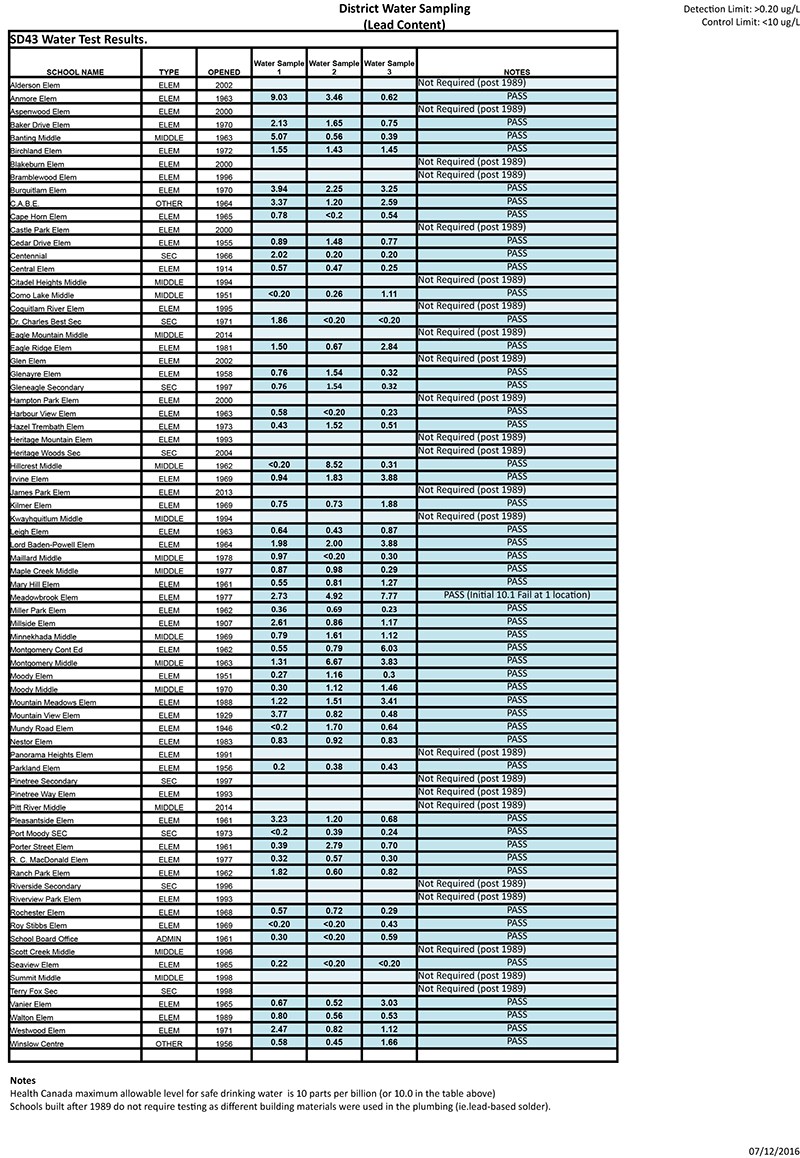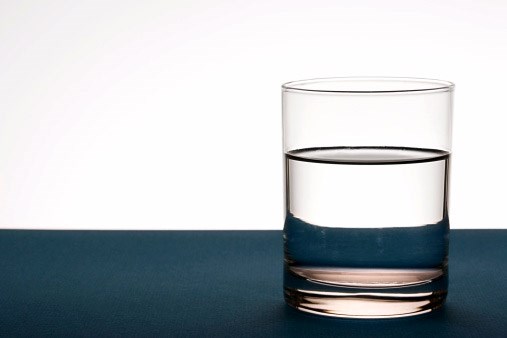Water sample reports for 53 School District 43 schools tested for lead under Health Canada regulations show only one school near the upper limit and another that initially failed but passed after a plumbing fixture was replaced.
Anmore elementary, built in 1963, was found to have 9.03 parts per billion (ppb) of lead in one test of drinking water by Maxxam Labs, which is still under the recommended 10 parts per billion allowable for safe drinking water. And two further tests showed much lower levels of lead (3.46 ppb and 0.62 ppb), also under Canadian standards.
The testing of 53 of 76 SD43 schools and facilities that took place in March also found one water sample at Meadowbrook elementary school failed to meet Canadian standards because it was found to have lead concentrations of 10.1 ppb. That situation was remedied, however, when a plumbing fixture was replaced, according to the district's community relations manager, Peter Chevrier. And follow-up sampling found lead levels within safe drinking water standards. The three tests for the 39-year-old Coquitlam school found concentrations of 2.73 ppb, 4.92 ppb and 7.77 ppb, results provided to The Tri-City News show.
Chevrier said facilities management staff knowledgeable in water testing protocol took samples from three taps or fountains in each school, with results provided to The News confirming that schools' drinking water met Canadian health standards.
Chevrier said SD43 will begin annual water testing at all schools built before 1989, when lead solder was used to weld copper water pipes. Previously, the district tested school drinking water only when it appeared to be discoloured or to have an unusual taste.
"We are now testing annually and will follow an annual testing schedule as mandated by the ministry," Chevrier confirmed.
Only schools built before 1990 need to be tested, he said, because newer schools meet updated standards for plumbing and materials.
The change in policy follows media reports of several B.C. schools, including a number in Surrey, Delta and Victoria, where drinking water was found to have elevated lead levels.




